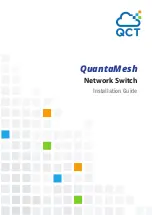
D I S T R I B U T I O N S O LU T I O N S
45
4.3 Earthing the switchgear
Each unit is fitted with earthing busbars that run
longitudinally in the lower front part of the unit.
These busbars must be connected together as
shown in chapter 5.3.1. The station earthing system
must be connected to the end unit of the
switchgear. If the switchgear consists of more than
8 units, it is advisable to connect the station
earthing system to both end units. The external
station earthing connection point inside the unit is
shown in Figure 118. All the apparatus is connected
to the earthing busbar via the switchgear housing.
The interconnection between units is capable of
carrying the rated short-time and peak withstand
current for the earthing circuit.
4.3.1 Installing the earthing busbar
Installation operations are as follows:
a) Unscrew the right-hand screw (when there is
another unit on the right side) and loosen another
two screws. Then move the busbar towards the
adjacent unit on the left.
b) Move the busbar from the unit to the right (when
there is another unit on the right). Add the screw
on the right and screw up all the screws with the
correct torque.
Figure 114. Control cable entries
Figure 115. Busbar moved towards the adjacent unit on the left
Figure 116. Busbar moved from the adjacent unit to the right
4.2 Control cables
The internal cables between units are easily laid
through openings in the side walls of the auxiliary
circuit compartment.
Depending on the delivery times, there are two
different procedures for supplying the connection
cables of the units:
• Cables not included
• Cables supplied rolled in a bundle in the auxiliary
circuit compartment.
Table 8 gives the correct torques for the terminal
blocks.
Terminal Blocks
Width of terminal
box (mm)
Cross-Section of
cable (mm
2
)
Tightening Torque
(Nm)
5
0,2-2,5
0,4-0,6
6
0,2-4
0,5-0,8
8
0,5-6
0,8-1
Table 8. Terminal Blocks
The options available for control cable entry are:
• Side duct at both ends of the switchgear.
• A duct can also be placed on the roof of the
switchgear to support the incoming cables, for
example, from an overhead cable ladder.








































